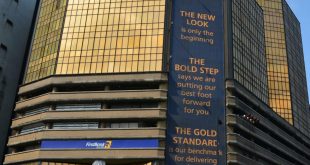
According to the National Bureau of Statistics, this was a significant rise, adding that the unemployment rate rose from the 4.2% recorded in Q2 2023 to 5.0% in Q3 2023.
The NBS, the custodian of official statistics in the country, disclosed this in a report it published on Monday titled ‘Nigeria Labour Force Survey Q3 2023’
“The employment-to-population ratio was 75.6% in Q3 2023 with a decrease of 1.5% compared to a ratio of Q2 2023.
“About 87.3% of workers were self-employed in Q3 2023.
“The proportion of workers in Wage Employment in Q3 2023 was 12.7%.
“The rate of unemployment among persons with post-secondary education was 7.8% in Q3 2023,” part of the report read.
It added that the unemployment rate for youth between the ages of 15 and 24 years was recorded at 8.6 per cent in Q3 2023 while the informal employment rate in Q3 2023 was 92.3 per cent.
The report added, “The unemployment rate in urban areas was 6.0% in Q3 2023, a slight increase of 0.1% from Q2 2023.
“Time-related underemployment in Q3 2023 was 12.3%, showing a slight increase of 0.5% from the rate recorded in Q2 2023. This shows an increase of 1.4% compared to the rate in Q4 2022.
“4.1% of the working-age population was in subsistence agriculture in Q3 2023. Informal employment rate in Q3 2023 was 92.3%, while Q2 2023 was 92.7%.
“Percentage of youth Not in Employment, Education or Training was 13.7% in Q3 2023.”
The 0.98 per cent increase shows that the inflation rate in the country is yet to slow down.
The NBS revealed this in its ‘Consumer Price Index’
The development adds more pressure on the Central Bank’s monetary policy committee to sharply raise interest rates at a February 26-27 meeting — its first in seven months.
 DailyrecordNg …Nigeria's hottest news blog
DailyrecordNg …Nigeria's hottest news blog







